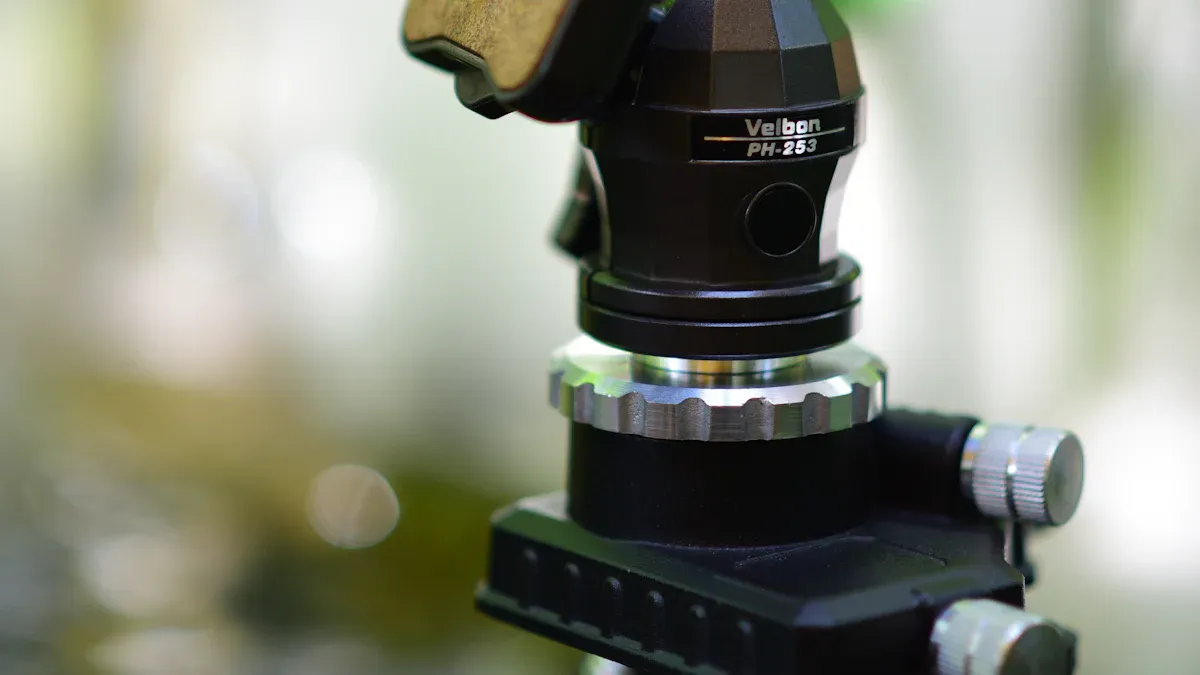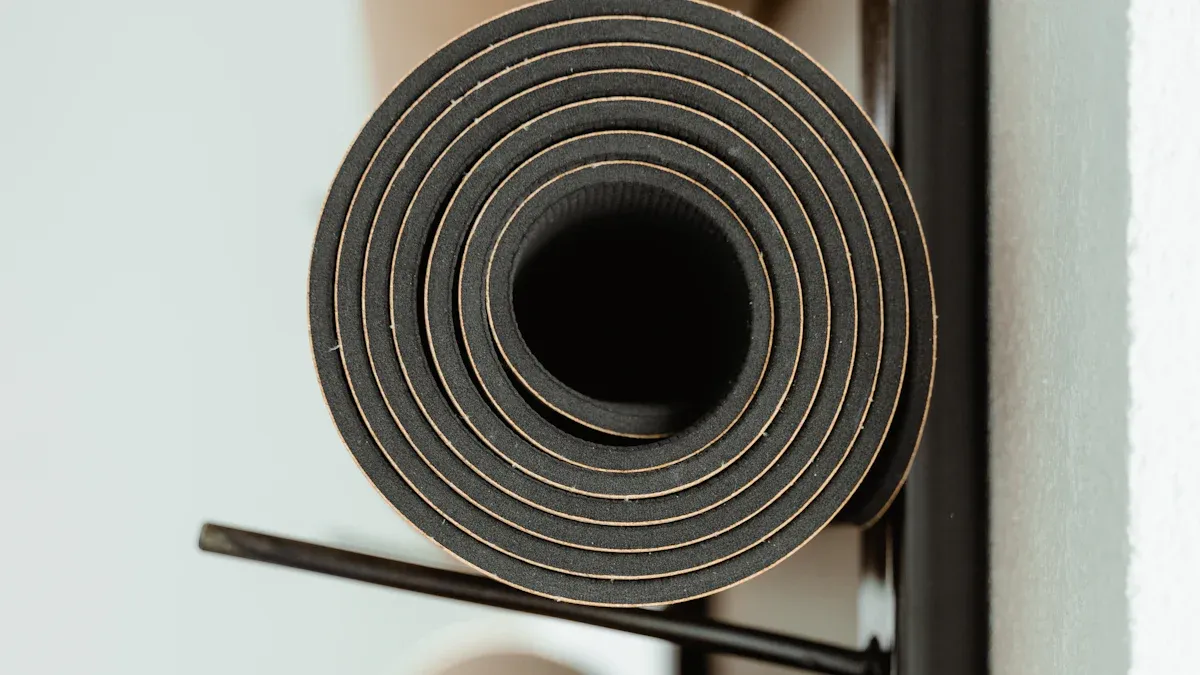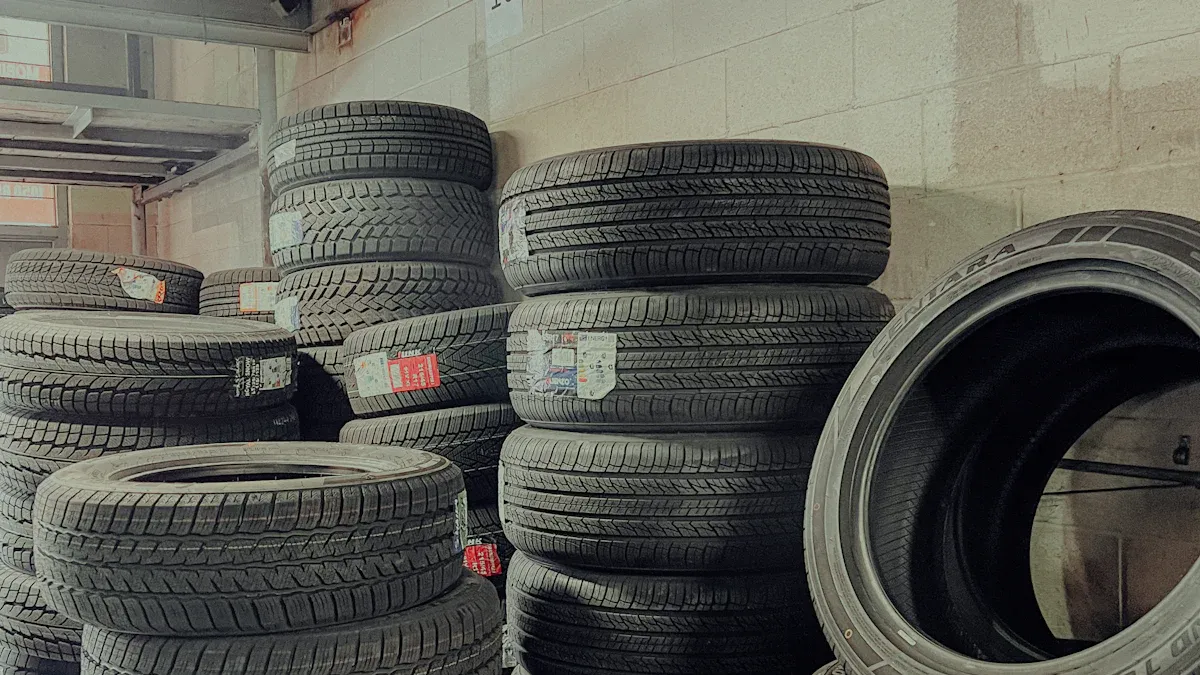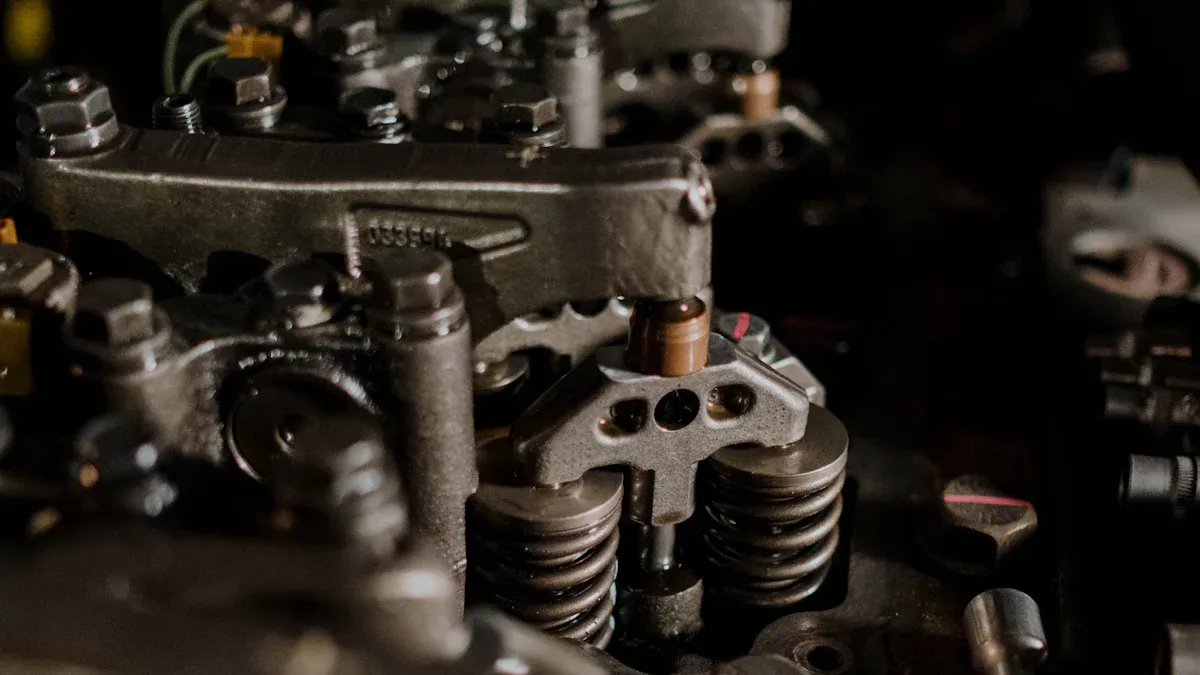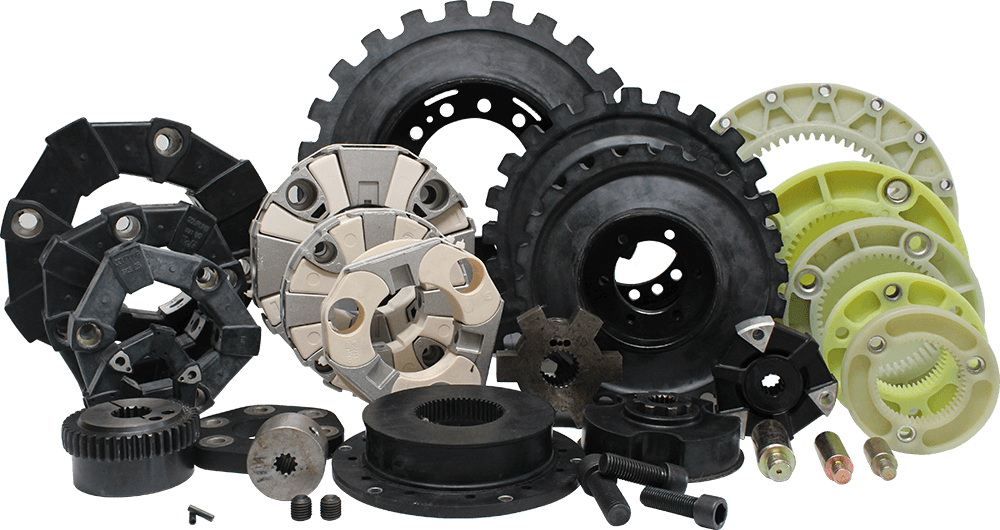
Anti-vibration mounts help stop unwanted shaking and noise in machines. These mounts work like soft pads. They keep equipment steady and quiet. When you use anti-vibration mounts, your machines last longer. They also work better. Do not worry if you do not know hard words. This guide will explain everything in easy words. It will help you learn how anti-vibration mounts protect your equipment.
Key Takeaways
Anti-vibration mounts stop machines from shaking. They also help reduce noise. This protects equipment. It makes work areas quieter too.
Picking the right mount type and material is important. It helps machines last longer. It makes them work better. It also lowers repair costs.
Different mounts fit different machines. Rubber mounts are for light machines. Spring mounts are for heavy machines. Bonded or vee mounts give more strength. They also give more precision.
You need to install mounts the right way. You should check them often. This keeps mounts working well. It also stops machine damage.
Good maintenance is important. Clean and check mounts often. This helps machines run smoothly. It saves money over time.
What Are Anti-Vibration Mounts
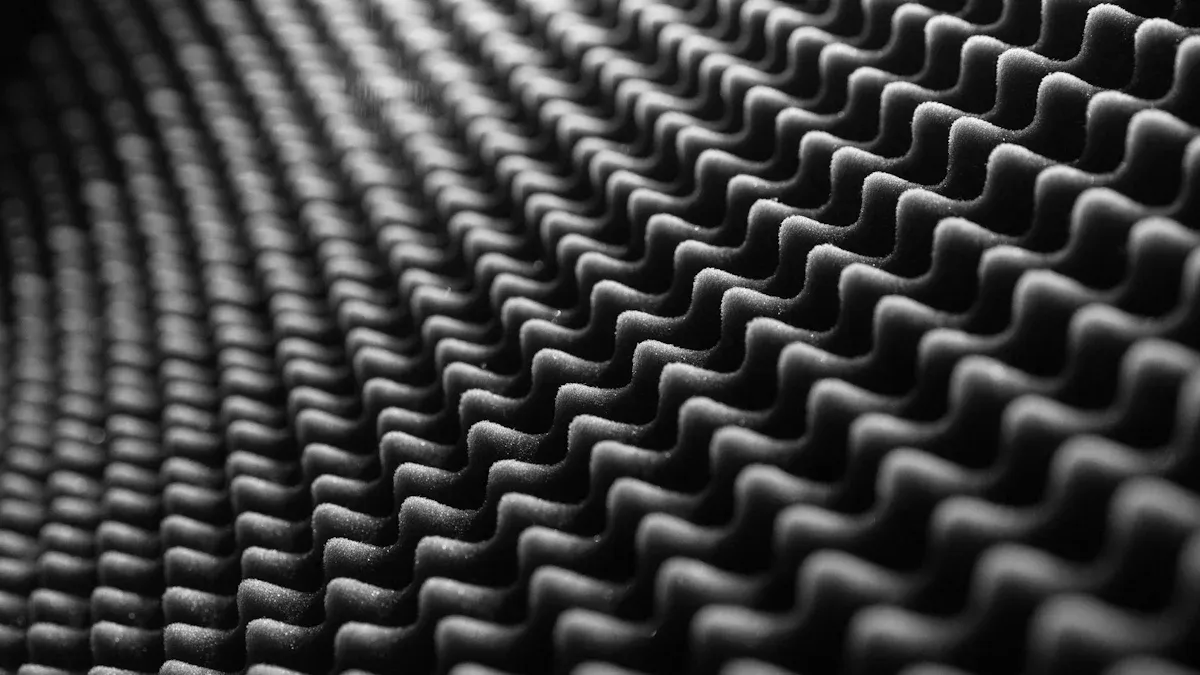
Basic Definition
People use anti-vibration mounts to stop machines from shaking and making noise. These mounts work like soft pads between the machine and the floor. They soak up vibrations and help keep things safe. This protects both the machine and what is around it. Most mounts are made from strong materials that can bend and stretch. Nitrile rubber and thermoplastic elastomers are two popular choices. Each one is good for different jobs because of its special features. The table below shows some important details:
Material Type | Key Properties | Description |
|---|---|---|
Nitrile Rubber (Synthetic) | Chemical Resistance | Handles chemicals and water well, but not sunlight or bad weather |
Temperature Range | Works in cold and hot places, from -40°C to 100°C (-40°F to 210°F) | |
Mechanical Properties | It is tough and stretchy, does not tear easily, and keeps gas inside | |
Thermoplastic Elastomers (TPE) | Vibration Damping | Very good at stopping shaking, does not wear out fast |
Temperature Range | Can take heat up to 140°C (284°F) | |
Chemical Resistance | Works with acids, oils, and alcohols, but not all strong chemicals | |
Other | Good for electronics because it blocks electricity |
Pick the material that fits your machine best.
Common Uses
You can find anti-vibration mounts in lots of places. They help machines run quietly and smoothly. Here are some main ways people use them:
Industrial Equipment: Factories use these mounts in big machines. They lower noise and keep machines safe from harm.
Transportation: Cars, trains, and planes use mounts to make rides smoother and quieter.
Aerospace: Airplanes and spaceships use special mounts to keep engines and parts safe from shaking.
Tip: Using anti-vibration mounts helps machines last longer and work better. This means you do not need to fix them as often.
You also see these mounts in things like home appliances, computers, and musical instruments. No matter where they are used, they help stop shaking and noise.
Why Use Anti-Vibration Mounts
Vibration Problems
Machines often shake or make noise when they run. If you do not stop these vibrations, many problems can happen. Here are some common things that can go wrong:
Imbalance: When spinning parts have uneven weight, they push hard on bearings. This makes the bearings wear out faster.
Misalignment: If parts do not line up right, machines shake more. This causes parts to wear out unevenly and break sooner.
Wear: Old or broken bearings, gears, or belts make machines shake. Damaged parts like chipped gears or bad bearings make more noise and shaking.
Looseness: If mounts or bolts are loose, parts can move too much. This makes shaking worse and can hurt the machine.
Environmental Factors: Vibrations from other machines or the building can also shake your equipment.
If you do not fix these problems, machines can break down early. You might have to spend more time and money fixing them. Vibration analysis can help you find problems early. But using vibration isolation and vibration dampers is the best way to stop them.
Benefits
Anti-vibration mounts help protect your machines and make them work better. These mounts give you many good things:
They act as vibration dampers and soak up shaking at the bottom of your machine.
Vibration isolation stops bad movement from spreading to other parts.
Damping lowers noise and keeps metal parts from hitting each other. This helps your machines last longer.
Anti-vibration support makes machines more steady. This stops them from tipping and keeps your workplace safer.
Good vibration control means fewer accidents and less fixing.
Picking the right mounts and materials helps with damping and makes machines last longer.
Note: Good vibration isolation and damping keep your machines safe. They also make your work area quieter and safer.
If you want your machines to work well and last a long time, use anti-vibration mounts and vibration dampers.
How Anti-Vibration Mounts Work

Vibration Isolation
Vibration isolation mounts help stop shaking from spreading. They act like a wall between the vibration and the area you want to protect. Think of a vibration isolator as a soft cushion. This cushion takes in energy and lowers movement that gets through.
Vibration isolation controls three things: frequency, amplitude, and damping. Frequency is how often something shakes each second. Amplitude means how strong the shaking is. Damping is how much energy the isolator can take in and turn into heat. You need to pick an isolator that matches your machine’s vibration. If you do this, you will have less noise and less damage.
Tip: Every vibration isolator works best at a certain frequency. If you match this to your machine, you get the best results.
Vibration Isolator Principles
A vibration isolator uses a spring and a damper to lower force. The spring lets the isolator move up and down. The damper slows down this movement. It works like a car’s shock absorber. The isolator helps keep the machine steady and safe.
The science behind a vibration isolator is about changing the natural frequency. If the isolator is soft, it lowers the natural frequency. If your machine shakes faster than this, the isolator blocks most of the shaking. Damping helps by soaking up extra energy, so the system does not bounce too much.
Here is how vibration frequency affects how well the isolator works:
Every vibration isolator has a special frequency where it works best.
Below this frequency, the isolator blocks shaking well. Above it, it does not work as well.
You need to match the isolator’s special frequency to your machine’s main vibration.
The isolator’s stiffness and damping change with frequency, so you must choose carefully.
Sometimes, you can use more than one type of isolator to cover more frequencies.
You can find different types of vibration isolator, like rubber, hydraulic, or pneumatic. Each type has its own stiffness and damping. Some isolators always work the same way. Others can change how they work while your machine runs. If you know these ideas, you can pick the right vibration isolation mounts for your needs.
Types of Anti-Vibration Mounts
There are many types of anti-vibration mounts. Each type is good for certain machines. You should learn how each isolator works before you pick one. The design, material, and mounting style change how well the vibration isolator protects your equipment.
Rubber Mounts
Rubber mounts are the most common vibration isolator. Factories use them a lot. Conveyor systems and precise machines use them too. These mounts use rubber to soak up shaking and noise. They stop metal parts from touching each other. You can use rubber mounts as feet, bumpers, bushings, or flexible connectors.
Typical applications:
Industrial machinery feet
Bump stops for moving parts
Bushings in conveyor systems
Vibration isolators for sensitive equipment
Rubber mounts come in many shapes. Some look like cylinders. Some are bump stops. The rubber can be nitrile, neoprene, or thermoplastic elastomers. Each material changes how much vibration the isolator absorbs. You need to match the mount to your machine’s weight and vibration frequency.
Tip: Rubber mounts are good for standard vibration dampers. They cost less and do not need much care.
Spring Mounts
Spring mounts use metal coils to block vibrations. These isolators work better than rubber mounts for heavy machines. They are best for low-frequency shaking. You see spring mounts under HVAC units, generators, and big pumps. Spring hangers hold up hanging equipment. Spring mounts support machines on the floor.
Spring mounts move more when the machine shakes. This means they block more vibration. Some isolators mix springs and rubber. This helps cover more vibration frequencies.
Comparison Table:
Mount Type | Best For | Isolation Efficiency | Typical Material |
|---|---|---|---|
Rubber Mounts | Light/medium machines | Good | Neoprene, nitrile, TPE |
Spring Mounts | Heavy/critical machines | Excellent | Steel, stainless steel |
Note: Use spring mounts for big machines that need strong vibration isolation.
Bonded Rubber Mounts
Bonded rubber mounts join rubber and metal together. This makes the isolator strong and last longer. You see these mounts where machines need to handle shocks, noise, and different loads at once.
Advantages of bonded rubber mounts:
Great at soaking up vibration and shock
Need little care (no oil needed)
Very tough because of pre-stressed elastomer
Lower noise
Can handle different kinds of loads
Built-in damping from rubber’s hysteresis
Cheaper after molding
Works well in compression and shear
Bonded rubber mounts use a special bonding process. This matches the elastomer and metal to your machine’s needs. You get better vibration isolator performance and longer life.
Tip: Bonded rubber mounts are smart for machines that need strong vibration dampers and little upkeep.
Vee Mounts
Vee mounts are also called vee blocks. They use hard materials like stainless steel or tungsten carbide. These isolators are best for jobs that need high precision. You see vee mounts in kinematic couplings and vacuum environments. They are used where repeatability matters.
Materials and benefits:
Hard stainless steel (type 440C): Fights rust and is easy to shape before hardening
Tungsten carbide: Very hard, does not wear out fast, stays strong in heat, good for heavy loads
Vee mounts give you thermal stability and very precise repeatability. Chromium in stainless steel helps fight rust. Tungsten carbide is stiff and lasts a long time. You pick the material based on your environment and how much load your machine needs to handle.
Note: Use vee mounts for machines that need strong, stable vibration isolators and high precision.
Pad Mounts
Pad mounts are flat isolators made from rubber, TPE, or other elastomers. You put pad mounts under machines to spread the load and soak up vibrations. These mounts are good for light and medium machines.
Examples:
Heavy-duty vibration mounts (screw-on feet) made from TPE, used for HVAC units and heavy machinery
Vibration-mount standoffs (male/male or male/female), made from neoprene and steel, used in flight controllers and generators
Vibration-mount grommets, made from neoprene, used in electronics assemblies
Pad mounts stick well to floors and give strong vibration damping. The material and hardness rating (Shore scale) change how much vibration the isolator absorbs. You need to check your machine’s weight, RPM, and static deflection before you pick a pad mount.
Tip: Pad mounts are easy to put in place. They work well as vibration dampers for many machines.
Summary Table: Types of Anti-Vibration Mounts
Mount Type | Material(s) | Typical Application | Key Benefit |
|---|---|---|---|
Rubber Mounts | Neoprene, nitrile, TPE | Machinery feet, bushings | Noise and vibration damping |
Spring Mounts | Steel, stainless steel | HVAC, generators, pumps | High isolation efficiency |
Bonded Rubber Mounts | Rubber + metal | Shock, noise, multi-load | Durability, low maintenance |
Vee Mounts | Stainless steel, carbide | Precision couplings | Stability, repeatability |
Pad Mounts | Rubber, TPE, neoprene | Electronics, heavy machinery | Easy installation, damping |
Remember: You should match the isolator type, material, and design to your machine’s needs. This helps you get the best vibration isolator performance and keeps your equipment safe.
How to Choose Vibration Damping Mounts
Picking the right vibration damping mounts helps your machines work better and last longer. You need to think about a few important things before you choose. This simple guide will show you how to pick vibration damping mounts for your machines.
Assessing Load and Application
First, check how heavy and big your machine is. The isolator must hold up the machine’s weight without breaking. If you use more than one mount, split the total weight between them. This tells you how much weight each mount will hold. Always look for uneven weight and where the center of gravity is. This stops one mount from getting too much weight.
Make sure the isolator can hold your machine’s weight.
Match the isolator’s frequency range to your machine’s vibration.
Think about your machine’s size and shape. Pick mounts that fit the space you have.
Use enough mounts to spread the weight evenly.
Decide if you want more flexibility or more stiffness. Too much flexibility can cause trouble.
For heavy machines, look at special isolators like air springs or wire rope isolators.
Tip: Spreading the weight right helps your mounts last longer and work better.
Material Options
The isolator’s material changes how well it stops vibration and how long it lasts. You can pick rubber, metal, or composite materials. Each one works best in different places.
Material Type | Best Use Case | Key Features |
|---|---|---|
Rubber/Elastomeric | High-frequency vibration damping | Flexible, good for light/medium loads |
Metal Springs | Low-frequency, heavy machinery | Strong, durable, handles big loads |
Wire Rope | Harsh environments, corrosion risk | Flexible, resists rust |
Air Springs | Adjustable loads, heavy equipment | Can change stiffness, smooth ride |
Composites | Special needs, custom applications | Mix of properties |
Pick a material that fits your machine and where you use it. For example, rubber is good for most machines. Metal springs are better for heavy jobs.
Static Deflection
Static deflection means how much the isolator squishes under your machine’s weight. This number shows how soft the mount is and how well it blocks vibration.
Follow these steps to use static deflection:
Find your machine’s main vibration frequency (like a pump at 1,000 rpm).
Decide how much vibration isolation you want (for example, 90%).
Use a chart to match the frequency and isolation level. This tells you the static deflection you need.
Divide the total weight by the number of mounts to get the load per mount.
Pick an isolator that gives the right static deflection for that load.
Example: If you have a 1,000 kg pump on four mounts and want 90% isolation at 1,000 rpm, each mount should squish about 10 mm under 250 kg.
Always check the maker’s deflection charts. These show how much each mount squishes under different weights. Do not put too much or too little weight on the mount. Too much weight can break the mount. Too little weight can make it not work well and cause shaking.
Environmental Factors
Where you put your machine changes how well the isolator works. Temperature is very important. Hot or cold weather can change how the mount works. Humidity, air, and even natural events can also matter.
Check the temperature where your machine will run.
Think about humidity and if chemicals might touch the mount.
Pick materials that do not rust or get damaged by chemicals if needed.
Make sure the mount fits the space and can last in that place.
Note: Always pick isolators made for your environment. This helps your vibration damping system work well for a long time.
If you need a good supplier for anti-vibration mounts, YNF Rubber has many choices for different machines and places.
Installation Guide
Preparation
You need to prepare your machine and workspace before you install any isolator. Start by checking the foundation. The base must be stiff and have the right shape. This helps your isolator work well. Make sure the ground reacts evenly to the weight and movement of your machine. If you want total vibration isolation, use an inertia block with pneumatic isolators. This setup absorbs more energy and keeps vibrations from spreading.
Choose anchor bolts that hold your machine tight but still let you adjust the base. Level the machine using screws or wedges. This step helps you fix any bumps or dips in the floor. Pick the right isolator for your machine. Some machines need pads, elastomer mounts, or spring mounts. The type depends on how much your machine shakes and how heavy it is. Stop your machine from moving during use by using special pads or anchors. Also, check that all pipes and wires have flexible connections. This keeps your machine safe and working well.
Step-by-Step Installation
Follow these steps to install your isolator:
Place the isolator under each mounting point of your machine.
Align the isolator so it sits flat and covers the full base area.
Insert anchor bolts through the isolator and into the foundation.
Tighten the bolts, but do not over-tighten. The isolator needs to flex a little.
Use a level to check that your machine sits straight.
Connect all utilities with flexible hoses or cables.
Test the machine at low speed. Watch for extra movement or noise.
Tip: If you need help choosing or installing an isolator, YNF Rubber offers many options and support.
Common Mistakes
Many people make mistakes when installing an isolator. You might forget to level the machine, which can cause uneven load and poor vibration control. Some people use the wrong type of isolator for their machine. This can lead to too much movement or not enough damping. Over-tightening bolts can crush the isolator and stop it from working. Ignoring flexible connections for pipes or cables can also damage your equipment. Always check the isolator after installation to make sure it works as expected.
Maintenance and Troubleshooting
Inspection Tips
You should check your anti-vibration mounts every couple of months. Look for cracks, splits, or any signs of material breakdown. If you see damage, replace the mount right away. Early checks help you catch problems before they affect your machine. Use a flashlight to see hard-to-reach spots. Press gently on the mount to feel for soft spots or loose areas. If you notice any change in shape or color, this could mean the mount is wearing out.
Tip: Regular inspections keep your anti-vibration support working well and help prevent sudden equipment failure.
Cleaning and Care
Keep your mounts clean to make them last longer. Wipe off dust, oil, or dirt with a damp cloth. Avoid using harsh chemicals that can damage rubber or metal parts. If your mounts are in a place with lots of oil or chemicals, check them more often. Make sure the area around the mount stays dry. Water or oil can cause the mount to slip or break down faster. If you see rust on metal parts, clean it off and apply a light oil to protect the surface.
Clean mounts work better and last longer.
Dry surfaces help prevent slipping and damage.
Avoid strong cleaners that harm rubber or elastomers.
Problem Solving
If your machine starts shaking or making more noise, check the mounts first. Loose bolts or worn pads often cause these problems. Tighten any loose bolts, but do not crush the mount. Replace any mount that looks cracked or flattened. If you still have problems, check for uneven weight or a tilted machine. Sometimes, you need to add or move mounts to balance the load.
Regular maintenance gives you many long-term benefits:
Your machines last longer because you reduce vibration-related wear.
You spend less money on repairs and replacements.
Your workplace stays safer and quieter.
Equipment runs more smoothly and accurately.
If you need new mounts or expert advice, YNF Rubber offers many options for different machines and environments.
Anti-vibration mounts help keep your machines safe and working longer. They soak up shaking, make less noise, and stop damage. You can see them in cars, factories, and electronics. Picking the right mount makes things safer and saves money on repairs.
Anti-vibration mounts:
Help machines stay steady and quiet
Cut down on fixing and care
Help machines use less energy
If you want to know more, look at case studies, read research, or ask experts like YNF Rubber for help.
FAQ
What is the main job of an anti-vibration mount?
An anti-vibration mount stops shaking and noise from machines. You use it to protect equipment and make your workspace quieter.
How do you know which mount to pick?
You check your machine’s weight, size, and vibration level. You match these to the mount’s material and type. You can ask YNF Rubber for help with choosing.
Can you install anti-vibration mounts by yourself?
You can install most mounts with basic tools. You follow the steps in the guide. You make sure the machine sits level and the bolts are tight.
How often should you check your mounts?
You check your mounts every few months. You look for cracks, soft spots, or loose bolts. You replace any mount that looks worn or damaged.
Where can you buy good anti-vibration mounts?
You can buy mounts from trusted suppliers. YNF Rubber offers many types for different machines. You get help with picking and installing the right mount.


